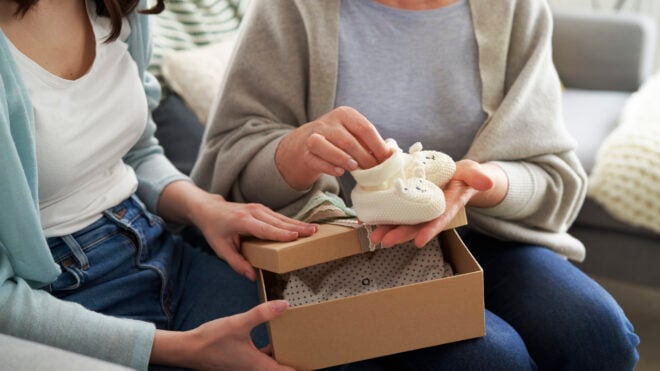Between 5 and 8 percent of women, the Preeclampsia Foundation notes, develop preeclampsia during pregnancy, a potentially serious disease that causes high blood pressure levels as well excess protein in the urine. While women who have had preeclampsia with an earlier pregnancy have an increased risk of developing it again with subsequent pregnancies — — especially if it was severe the first time around — you can take steps to reduce that risk.
Recurrent Risk
If you were diagnosed with preeclampsia with an earlier pregnancy, the likelihood that you'll develop it again ranges around 20 percent, the Preeclampsia Foundation notes; depending on the specifics of your particular medical history, the range can be closer to 5 percent or as high as 80 percent. Research published in the British Medical Journal and the American Journal of Obstetrics & Gynecology provides a similar estimate of the risk: between 14 and 30 percent. The earlier you are in the pregnancy when the condition is diagnosed and the more severe it is, the more likely you'll develop it again, the researchers found.
Severe preeclampsia is marked by a systolic blood pressure reading of 160 or more, by a diastolic reading of 110 or more, or as having signs of pulmonary edema or liver impairment. Moreover, if you had preeclampsia with your first pregnancy, but not with your second, your risk of developing it with third or later pregnancies still remains heightened.
Reducing the Risk
While it's not possible to completely eliminate the risk factors associated with recurrent preeclampsia, you can take steps to reduce the risk. Research has indicated that low-dose aspirin — between 60 and 81 milligrams — can help to prevent the condition in women with early-onset preeclampsia, which is defined as delivery before 34 weeks gestation, or who have had two more pregnancies complicated by preeclampsia, according to Dr. Lindsay Nordwald, an obstetrician and gynecologist with the Hutchinson Clinic in Kansas.
Still, she stresses that "there is no evidence to show that aspirin will prevent preeclampsia in low-risk pregnancies." Calcium supplementation has been shown to prevent preeclampsia in women who have calcium deficiency, notes the University of Maryland Medical Center. The effectiveness of of supplements like vitamin D, folic acid, vitamin B6 and vitamin C also have been studied but is inconclusive, UMMC states. As always, talk to your doctor before taking any supplements or medications during pregnancy.
Make Lifestyle Changes
Certain factors associated with pregnancy, such as maternal age, carrying multiples or family history, can be beyond a mother's control. Mothers can, however, make certain lifestyle changes to reduce the risk of developing preeclampsia again. Since obesity contributes to the development of preeclampsia, make sure you are of healthy weight and body mass index before attempting to conceive again.
"The most important thing to do is to optimize the mother's health prior to pregnancy," Nordwald says. If you have a chronic medical condition such as diabetes, hypertension, lupus or kidney disease, make sure it's being treated and managed before getting pregnant again. Prenatal care is essential, so maintain regular visits with your obstetrician throughout your pregnancy.
Monitor Symptoms
If you've had preeclampsia with a previous pregnancy – especially if it was severe — you already know that the symptoms can come on silently and gradually. If you notice any of the same symptoms, such as gripping headaches, blurred vision, abdominal pain, decreased urination or shortness of breath, contact your doctor immediately.
If symptoms recur, your doctor may prescribe time off of work, bed rest, prescription medications and possibly hospitalization to keep your blood pressure under control, the Preeclampsia Foundation notes. If you are diagnosed with preeclampsia late in your third trimester and your baby is full-term at 37 or more weeks, your health care provider may wish to deliver your baby early, since the only cure for this condition is the birth of your child and delivery of the placenta.
Photography by: Jose Luis Pelaez Inc/Blend Images/Getty Images



